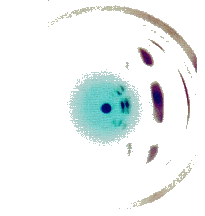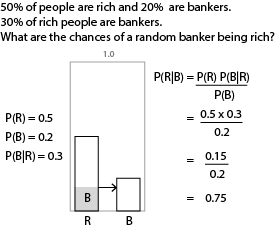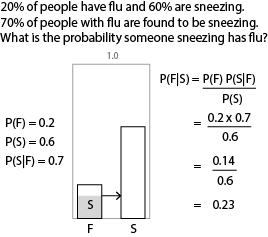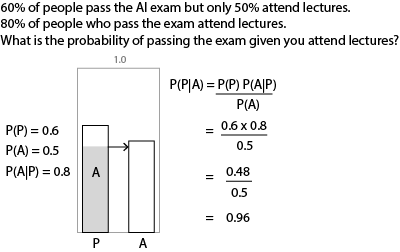 speeding
speeding
speedingTicket  speeding
speeding
This is read `getting a speedingTicket implies that you were speeding'.
But we often need to be able to state consequences probabilistically. This can be done using conditional probabilities.

This is read `the probability of speeding given that you got a speeding ticket is 0.9'

Probabilities in a distribution must sum to 1.0.
The more flat it is, the greater the uncertainty.
The more cases there are, the greater the uncertainty (for distributions of a particular flatness).

where  is the probability of the ith alternative.
is the probability of the ith alternative.
The value of the entropy rises with the number of alternatives and the uniformity of the attributed probabilities.
More extreme probabilities produce lower evaluations.


Using entropy as a measure of uncertainty, we can evaluate how much information is obtained when something happens (e.g., a message) which updates distributions.
Reduction of uncertainty implies an increase of knowledge.
We have no knowledge about which is the case.
The probability distribution is {0.25, 0.25, 0.25, 0.25}.
The entropy is 2.0
(It's always  with a flat distribution.)
with a flat distribution.)
Given we took logs to base 2, the entropy is also the number of bits you need in a binary system to encode 4 values.
The amount of information in a message or event which establishes the state of affairs is then measured as 2 bits.
These methods chain implications together in a way that takes probability into account.
The simplest approach to probabilistic reasoning uses the inference method known as Bayes' rule.

We can plug any values we like into this formula to infer a conditional probability for the conclusion.
P(C) and P(E) are called prior probabilities. P(E|C) is the likelihood. P(C|E) is called the posterior probability.



By combining Bayes rule with the product rule, can find the probability of each hypothesis given the data.
P(H1|D1,D2) = P(H1|D1) x P(H1|D2)
The most probable hypothesis is called the maximum a posteriori (MAP) hypothesis.
Deriving it is called MAP inference (what is usually meant by `Bayesian inference')
In practice, the process has the problem that probabilities become vanishingly small.